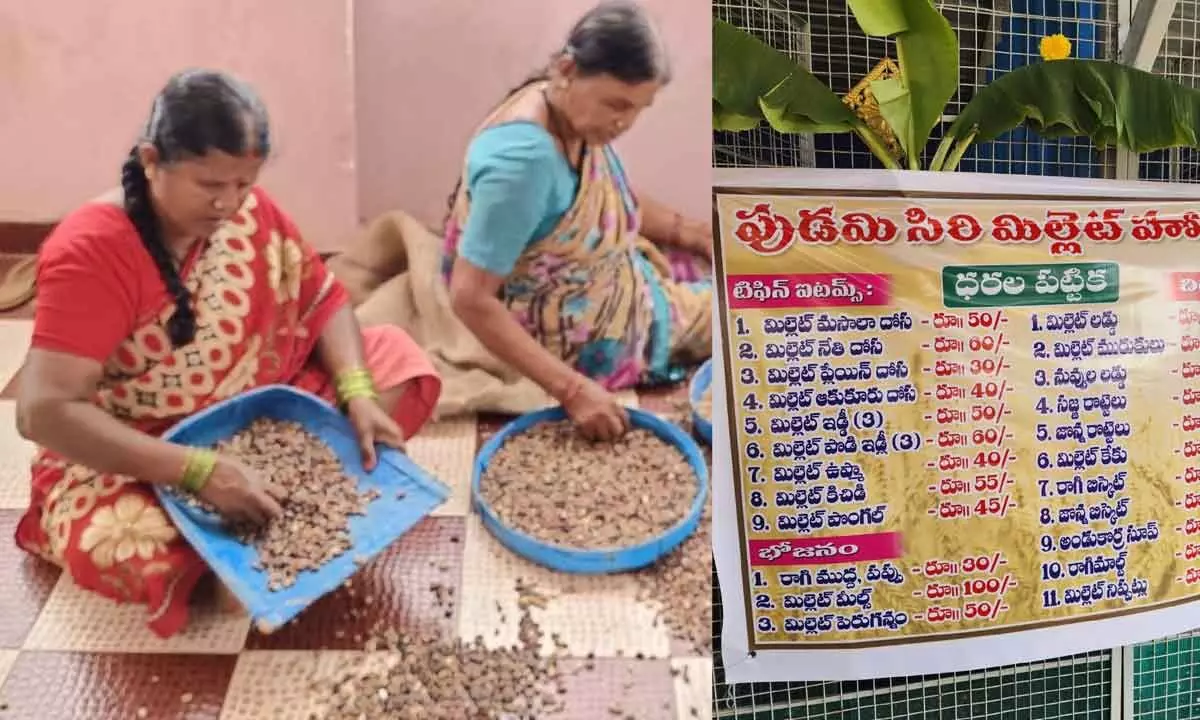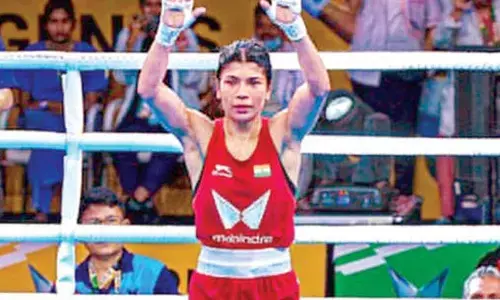'Millets Kitchens' growing popular in Seema districts

‘Millets Kitchens’ growing popular in Seema districts
- Many people are trying to take advantage of consuming millets food particularly those plagued with multiple long-term diseases that necessitate a redefining of their traditional diet with millets food
- REDS Chairperson Bhanuja, who recently launched a hotel catering to both diabetic and non-diabetic general public, says prices will go down once cultivation acreage increases
Anantapur-Puttaparthi: A host of organisations with a service motive concept, small hotels and even several start-up company kitchens and NGOs are promoting millets cultivation as it has several health benefits besides having many essential nutrient contents in them. They are also creating massive social awareness both in electronic, print and social media on the subject.
Many are trying to take advantage of consuming millets food particularly those plagued with multiple long-term diseases that necessitate a redefining of their traditional diet with millets food, which appears to be a panacea for them. While cooking millets food in one's own domestic kitchen is less expensive than the hotel supplied food, some who can afford the cost prefer to buy it from hotel as they know the art of making millet food tasty.
Rayalaseema districts are known traditionally for consumption of millets more particularly in rural areas still have the presence of 'Ragi Muddha' hotels operating in huts, pushcarts and make-shift huts. These roadside hotels cater to the rural and poorer sections of society at a cheaper rate. Unprocessed millets like Ragi and Korralu widely consumed in the Seema region are cheaper while processed and refined millets are costlier. Even today, old timers still eat Ragi Mudda atleast one meal a day. During festivals and in Sunday menus, Ragi Mudda and Korralu are a must in most of the homes.
A roadside Ragi Mudda with dal or curd is supplied at Rs 20 to Rs 30 per plate but people eat double the quantity as it does not suffice. A hotel operated by REDS, an NGO is selling millet masala dosa at Rs 50, millet plain dosa at Rs 30, Akukoora dosa at Rs 40, millet idli at Rs 50, upma at Rs 40 and millet pongal at Rs 45. Millet meal is sold at Rs 100. Also soups and sweets are available. Comparatively millet foods by and large cost Rs 10-20 more than ordinary items like idli and dosas. These items if delivered at doorstep would cost more.
Prakash Yarava, an internet centre owner, talking to The Hans India says purchasing in hotels cannot be afforded by the lower middle-class like him. "I prepare my millet meal in my own kitchen. I adopted 2 times millets diet and rice diet for lunch every day," he said. When asked if he felt that millets diet is expensive, he retorted that one should cut down unnecessary expenditure and be willing to buy healthy food even if it is expensive. We need economy hotels that will cater to middle-class sections, he says.
REDS Chairperson Bhanuja told The Hans India that the hotel recently launched is catering to both diabetic patients and non-diabetic general public. Many visit the hotel on the Bellary highway while some are getting it door delivered to their homes. Asked to comment on the expensive nature of millets diet, Bhanuja said prices would go down once cultivation acreage increases. Already people who are ready to switch on to millets diet and waiting and seeing for a dip in the millets' prices. Production should increase and government incentivises by extending subsidies for seed, it will go a long way in millets coming back to our food basket, she added. Millets Revelation managing director M N Dinesha Kumar working on millets for more than three decades, observed the increase in awareness about the health benefits of millets foods has led to gradual raise in the demand for consumption of them in the place of paddy and wheat. Millets are highly effective source to tackle malnutrition and health issues. Over 70 percent of our countries' farmers are small landholders and millets are best suited for small landholders and subsistence farming.
















